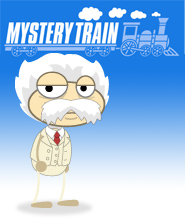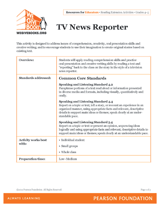This guide to Poptropica's Mystery Train Island will introduce your students to the 1893 Chicago World's Fair, a wide variety of notable train "passengers" (including Susan B. Anthony, Thomas Edison, Nikola Tesla, Mark Twain, and many others), mystery-solving, and more!
Poptropica is one of the Internet's most popular sites for kids—and now it's available as an app for the iPad! It's not just a place to play games; each of the islands featured on the site provides a learning opportunity.


This guide to Poptropica's Mystery Train Island will introduce your students to the 1893 Chicago World's Fair, a wide variety of notable train "passengers" (including Susan B. Anthony, Thomas Edison, Nikola Tesla, Mark Twain, and many others), mystery-solving, and more! Poptropica is one of the Internet's most popular sites for kidsâand now it's available as an app for the iPad! It's not just a place to play games; each of the islands featured on the site provides a learning opportunity.
- All Aboard!
On Poptropica's Mystery Train Island, our hero learns that the Chicago World's Fair is about to begin, and there's a train going directly there! The John Bull was a steam locomotive, powered on coal, but trains throughout history have run on everything from diesel fuel to electromagnetism. To attend the World's Fair, the train made a special trip starting from Jersey City, New Jersey, traveled through Philadelphia, Pennsylvania, and arrived in Chicago Illinois, a distance of approximately 850 miles. Moving at 25-30 miles per hour, it took 5 days to make the trip.- Using a map of the United States, trace the path of the John Bull outlined above.
- Imagine that the train started in your hometown instead (if you live in Chicago or Jersey City, pick any city for this exercise). On the same map in a different color, trace the path the train would have to travel to reach Chicago. If you live outside the United States and need to travel by boat for part of this trip, include that leg as well.
- Calculate the amount of time it would take the train to travel from your hometown to Chicago (assume you're traveling at 25 mph). Don't forget to calculate the distance in miles first! You want to reach Chicago on April 22, 1893; on what date must you leave to arrive in time?
- Draw your own larger version of your map to Chicago. Label the cities and states you have to drive through. Mark the date you'll likely travel through each location.
*See alignment to the Common Core State Standards - My Kind of Town
The 1893 World's Fair in Chicago was one of the biggest events in the city's history, but Chicago was a thriving metropolis even before the fair came to town. Learn some Fun Facts about Chicago, and then travel the city to visit Chicago's Landmarks.
Encourage students to research the 1893 World's Fair in Chicago to find out more about this storied event. The History Channel's website has a great list of facts about the fair, but you can use any website or book of your choosing. Then, tell them that they are going to create a poster advertising the Fair, as a way to increase attendance to the event. They can draw, use clip-art, or cut pictures from magazines to make dynamic images for the poster. They should also include a slogan, a list of attractions, Chicago landmarks to visit (in 1893!), and information about surrounding accommodations (remember, most visitors will have to travel a long distance to reach Chicago, and they will likely stay for an extended period). They should be creative and have fun!
*See alignment to the Common Core State Standards - Notable Passengers: Thomas Edison
One of the first passengers our hero meets on Mystery Train Island is the famed inventor Thomas Edison. Ask your students what they know about Edison. What did he invent? The device featured prominently in Poptropica's Mystery Train Island was his "motion capture device" (or the Kinetoscope), an early image-only video camera. This device would ignite the world of movies. The very first film ever created is only about 30 seconds and called Blacksmith Scene (you can watch it on YouTube: http://www.youtube.com/watch?v=cm5g7CfXYYE).
Ask students to imagine what it would have been like to see a film for the very first time. This film might seem boring or silly today, but since it was the first of its kind, it would have been very intriguing to the viewers. The audience likely would not have understood the technology, or have any idea what they might be seeing at the exhibition that day. Would the new technology be frightening? Exciting? Encourage students to pretend that they are in the audience at the first showing of Blacksmith Scene (incidentally, in Brooklyn, NY in 1893, not at the Chicago World's Fair, where it was originally scheduled to be unveiled). Have them write a first-person short story of the overall experience.
*See alignment to the Common Core State Standards
Then assign one or more of the following worksheets:- Thomas Edison Revisited (2-3)
- Serendipity in Science: Edison & Inventions (6-10)
- Thomas Alva Edison, Inventor (4-8)
- Want to Work for Edison? (6-10)
- Learn About the Invention of the Light Bulb (K-3)
- How an Electric Light Bulb Works (2-4)
- Reading Warm-Up 46: American History (1-2)
- My Book of Ingenious Inventors (2-4)
- Notable Passengers: Susan B. Anthony
One of the first items our hero collects on Poptropica's Mystery Train Island is a pamphlet from Susan B. Anthony, all about women's suffrage. "Fight for Freedom" is even written on the wall of her room! Introduce Anthony to your class, and watch a short biographical video about the activist. Discuss the women's suffrage movement, equal pay for women, the temperance movement, and abolition, all causes of Anthony's.
Ask students to pick one of Susan B. Anthony's causes, listed above. Imagine it is 1893, and they're trying to bring awareness to the issue. Have them design their own pamphlet to support their cause (this can be hand-drawn or created on the computer). The pamphlet should feature a bold headline, strong images, and a persuasive argument, backed by facts and figures.
*See alignment to the Common Core State Standards - Notable Passengers: Mark Twain
Author Mark Twain is one of America's most celebrated writers. The Adventures of Huckleberry Finn, the manuscript of the book that Twain is carrying with him on the train, may be a bit advanced for young students. You can give them a short summary of the book (included in the linked literature guide above), or tell them that the story is about a boy who runs away from home so he doesn't have to do what his guardians tell him to do.
Ask students:- Have you ever thought about running away from home? Why?
- If you did decide to run away, where would you go?
- What would you bring with you? (Remind them they have to carry whatever they take.)
- What would you do when you got to your destination?
- How would you make money?
- What would you eat?
- Special Report
A reporter from the New York Times and Le Monde (a French newspaper) are both passengers on the train. They both are integral players in helping our hero solve the mystery of who stole Edison's motion capture device and Tesla's transformer design. Ask students to pretend they are a journalist for a rival newspaper, the Poptropica Gazette, and they're writing a story about the theft of the motion capture device, the transformer sketch, and the subsequent capture of the thief, Mademoiselle Moreau. Introduce them to some of the basics of journalism and distribute a Who, What, Where, When, and Why graphic organizer to help them get started on their news report.
*See alignment to the Common Core State Standards
As an alternate activity, students can pretend to be television news reporters, and report on a book they read. (This activity addresses Common Core State Standards for speaking and listening.) - Architect of Inspiration
On Mystery Train Island, the character of Gustave Eiffelâengineer, architect, and freemasonâclaims, "All great creations should inspire others to even greater heights." He wasn't afraid of the Ferris Wheel outshining his Eiffel Tower... he hoped it would! He wanted his Tower to be an inspiration. Use Eiffel's lesson on your students (grades 5+), and encourage them to design a building for your community.







*See alignment to the Common Core State Standards






